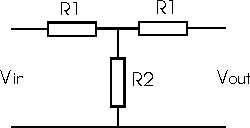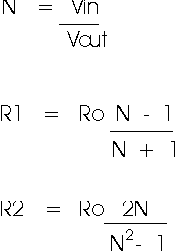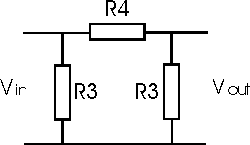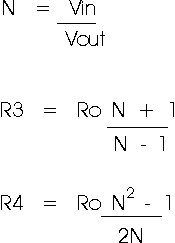Attenuator circuits are used in a variety of radio frequency circuit design applications. The attenuators reduce the level of the signal and this can be used to ensure that the correct radio signal level enters another circuit block such as mixer or amplifier so that it is not overloaded. As such attenuators are widely used by radio frequency circuit designers. While it is possible to buy ready made attenuators, it is also easy to make attenuators for many applications. Here a simple resistor network can be used to make attenuators that provide levels of attenuation up to figures of 60 dB and at frequency of 1 GHz and more, provided that care is taken with the construction and the choice of components.
One important feature that is required for radio frequencyapplications is that the characteristic impedance should be maintained. In other words the impedance looking into and out of the attenuator should be matched to the characteristic impedance of the system.
T and Pi networks
As the name suggests the "T"section attenuator is in the shape of the letter T with two resistors in the signal line and one in the centre to ground.

T section attenuator
The two resistor values can be calculated very easily knowing the ratio of the input and output voltages, Vin and Vout respectively and the characteristic impedance Ro.

The pi section attenuator is in the form of the Greek letter pi and has one in line resistor and a resistor to ground at the input and the output.

Pi section attenuator
Similarly the values for the pi section attenuator can be calculated

Practical aspects
It is generally good practice not to attempt to achieve any more than a maximum of 20 dB attenuation in any one attenuator section. Even this is possibly a little high. It is therefore common practice to cascade several sections. When this is done the adjoining resistors can be combined. In the case of the T section attenuator this simply means the two series resistors can be added together. For the pi section attenuators there are parallel resistors.
When making large value attenuators, great care must be taken to prevent the signal leaking past the attenuator and reaching the output. This can result from capacitive or inductive coupling and poor earth arrangements. To overcome these problems good earth connection and careful layout, keeping the output and input away from one another are required. It may also be necessary to place a screen between the different sections.
Using these attenuators a surprisingly good frequency response can be obtained. Non-inductive resistors are required to ensure the best performance, and using good printed circuit board techniques and surface mount resistors, a good performance at frequencies in excess of 1 GHz are easy to achieve.
 I designed this blog to help and get benefited by their deeds in my career.I hope you all utilise this opportunity and get benefited.
****Feel free to contact me *****
I will soon update remaining........
keep visiting ........
I designed this blog to help and get benefited by their deeds in my career.I hope you all utilise this opportunity and get benefited.
****Feel free to contact me *****
I will soon update remaining........
keep visiting ........
No comments:
Post a Comment